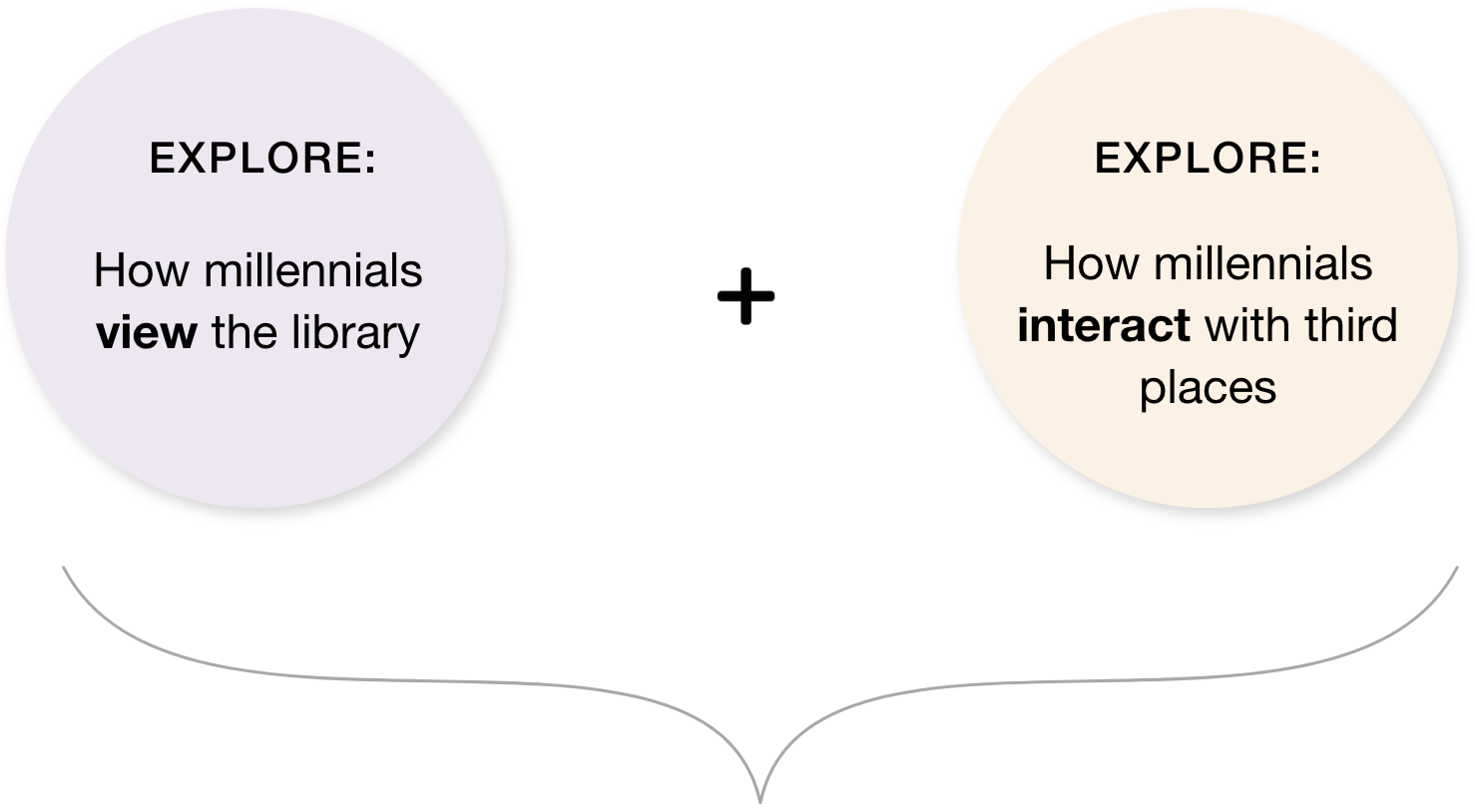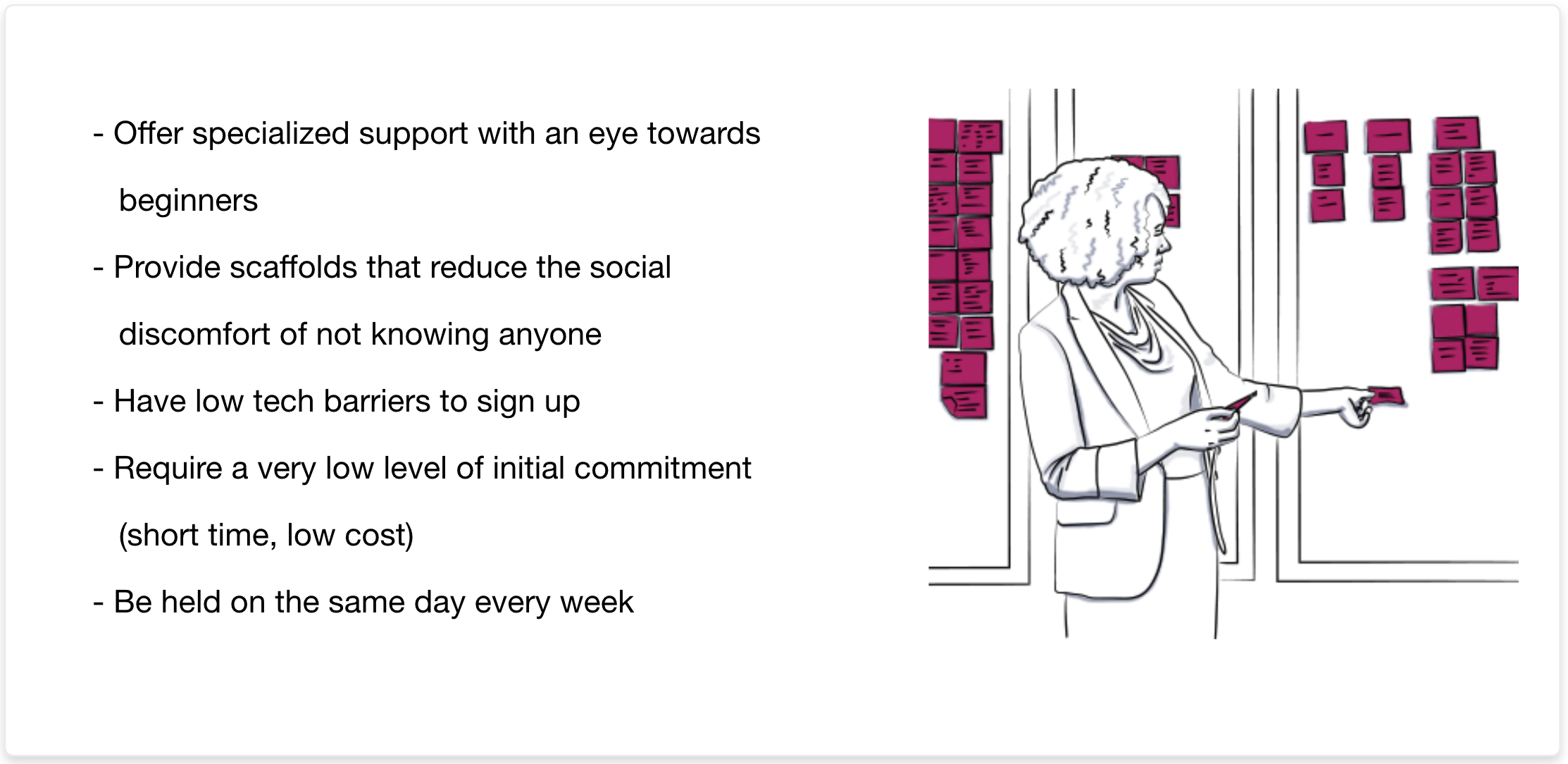Reimagining the Chicago Public Library (CPL)
as a Social Space for Millennials
At-a-Glance
Over the last two years of the pandemic, Chicago Public Library (CPL) could not escape the direct impact of COVID-19, often having to repeatedly close and reopen. With visitorship to CPL declining by 44% since 2019, my team initiated
a research project to examine how young Chicagoans would like to see CPL evolve in the future, with a focus on identifying creative placemaking opportunities.
Client
Role
Project context

Primary & Secondary research
Field Observation
Ethnographic Interviews
Qualitative Data Analysis & Synthesis
Ideation / Concept development
Team project : 3 members
14 weeks
2022
CHALLENGE
People no longer feel a strong motivation to use the library, between completing all their studies and having a child after marriage
And, people of this age group are now the ‘MILLENNIAL’
For a high-engagement group, there is a strong motivation for studying. And a case of married couples with children in the medium engagement group, they check out books or bring their children to libraries to develop child’s language, cognitive, and social development. Middle-aged and elderly were also using the library to some extent to attend cultural classes, programs, or lectures for improving mental health. Unlike those two groups, high engagement and medium engagement, the low engagement group, dominated by millennials who are a single or married couples without children, has the least motivations to use libraries. Hence, my team focused on this usage gap of the changes of human life stage and specified the target user group.

BUSINESS OPPORTUNITY
Millennials have a collective spending power of $2.5 trillion

Therefore, Chicago public libraries to take a bigger leap in the future, CPL should attract millennials’ re-engagement and serve what millennials interesting.
RESEARCH GOAL
Explore opportunities for Chicago Public Library to revitalize its relationship with millennials.

To define :
Strategies for Chicago Public Library to implement millennial-centered programming
PRIMARY RESEARCH
Placemaking
For community-powered public spaces we use Project for Public Spaces (PPS) diagram identified eleven key principles. The Place Diagram has developed to help communities evaluate places. The inner ring represents a place’s key attributes, the middle ring its intangible qualities, and the outer ring its measurable data.

Sociability + Use / Activities : Strengthens the connection between people and the places they share, placemaking refers to a collaborative process by which we can shape public spaces in order to maximize shared value.
Third Place
The concept of the third space has been used as a sociocultural term which refers informal public gathering places as distinct from the home (first space) or work (second space). The third place offers stress relief from the everyday demands of both home and work. It provides the feeling of inclusiveness and belonging associated with participating in social activities.

RESEARCH METHODS
19 Total Participants

KEY INSIGHTS
























 Go to Final Recommendations 👆
Go to Final Recommendations 👆